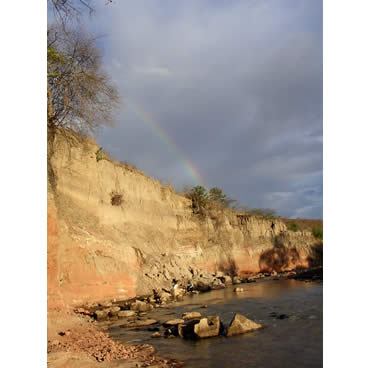Cenozoic
After the end-Cretaceous extinction event, Afro–Arabia entered a period of relative isolation that lasted throughout much of the Paleogene (65 – 23 million years ago), with occasional small–scale faunal exchange with other landmasses. As the African biota radiated in near–isolation, certain mammal groups dominated the landscape. Many of these endemic forms later became extinct after the collision between the Afro–Arabian and Eurasian plates allowed widespread exchange of previously separated faunas throughout the Neogene onward (23 million years ago – present). Our knowledge of African Paleogene faunas has largely been based on sites from supra-equatorial Africa, particularly in areas that are now part of the Sahara Desert. Until recently, little was known of Paleogene terrestrial faunas below the equator, rendering assessments of large-scale biogeographic patterns all but impossible. And although the African fossil record later in the Neogene–Quaternary is better documented, significant temporal and/or geographic sampling gaps remain for elucidating the origin of the modern African fauna.
Since the inception of the RRBP, a wealth of new invertebrate and vertebrate forms have been recovered from the late Oligocene Nsungwe Formation deposits and the Neogene Lake Beds sequence, including but not limited to freshwater crabs, gastropods, fishes, frogs, turtles, crocodylians, snakes, birds, rodents, macroscelideans, hyracoids and primates (for an overview, Stevens et al., 2008). Documentation of these diverse faunas from below the equator can help to better characterize regional faunal patterns, and explore the role of synchronous tectonic and paleoenvironmental changes to the African landscape in shaping vertebrate evolutionary history.

